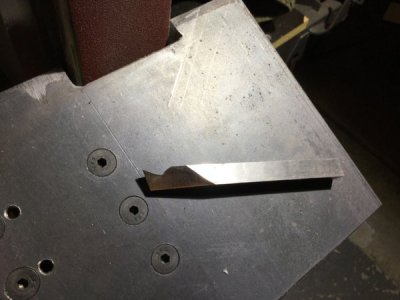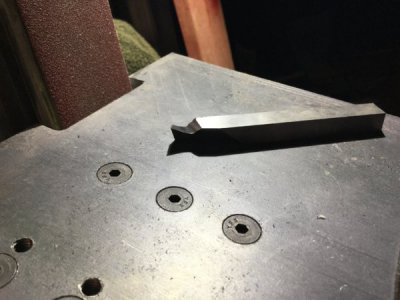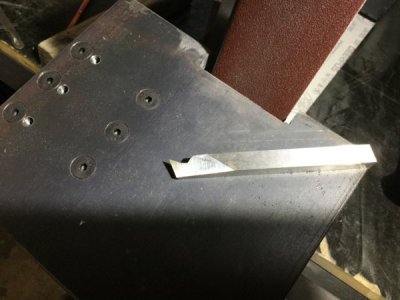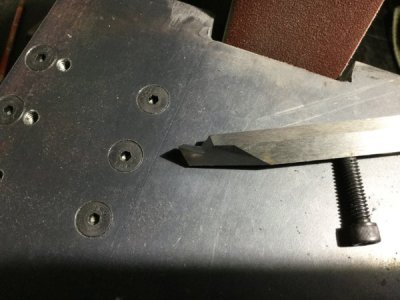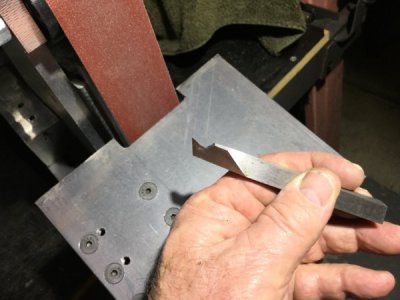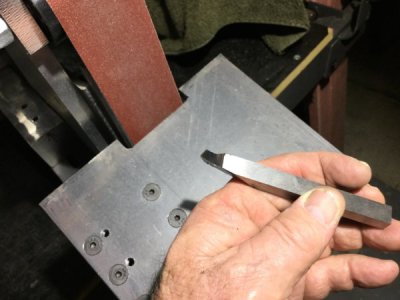You're right, and I do realize that messing with tool geometry is not something everyone wants to do. I just wanted to say that if you should decide to try it one day, I've given you what I know about it so you can do it.
Let me give you one tool I think will be useful to you. It is my aluminum tool; since we hobby guys turn a lot of that material it might come in handy. This tool will make a square tool look crappy when turning aluminum.
- Shape: general purpose
- Relief angles: 15 degrees for side and end
- Side Rake: 18 degrees
- Back Rake: 40 degrees
- Nose Radius: 1/32"
This thread has allowed us to communicate in the shorthand given above and you should be able to reproduce my aluminum tool with ease. This tool will cut deeper, finish finer and if you get the feed right, it will produce chips instead of stringers on your roughing cuts. It will clear chips so well that you won't have any chip welding (BUE = built up edge) and it will take an extremely fine cut so coming in on size is simple.
Try this tool, your first material-specific tool, and you'll see why our square tool is just the beginning.


